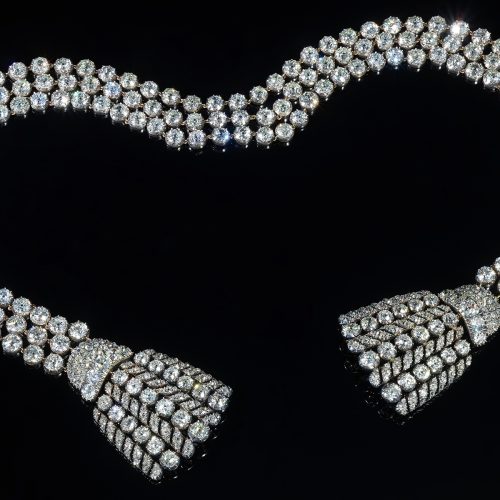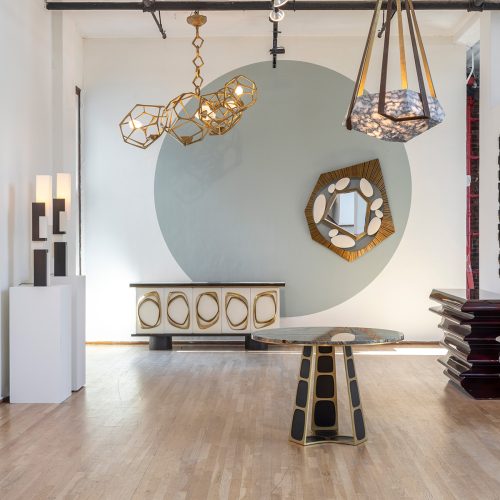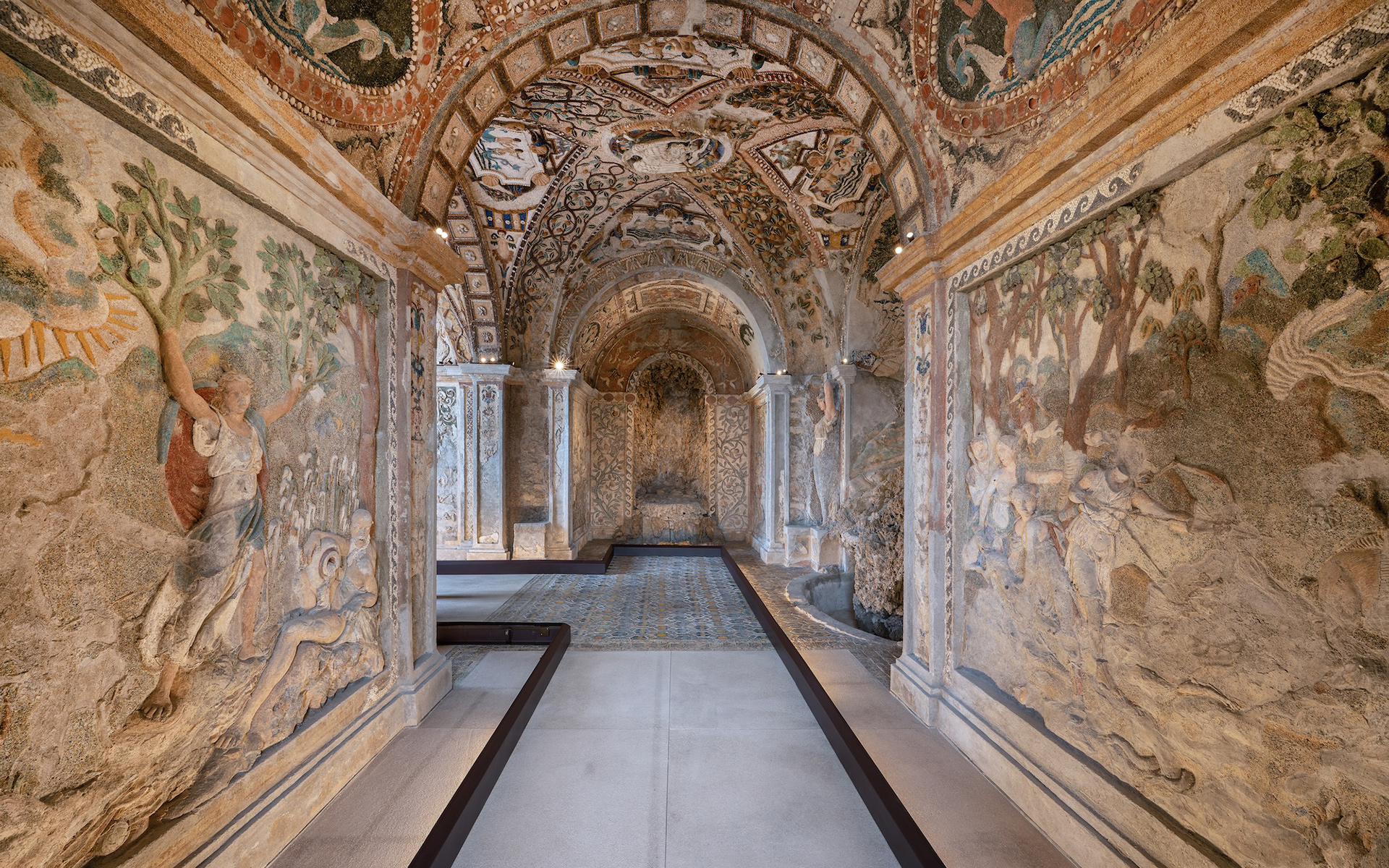

In Tivoli, a Roman-Era Grotto Is Revived After a Lengthy Restoration
A two-year, Fendi-backed restoration brings the Grotto of Diana, one of Tivoli’s most ornate marvels, back in public view after being closed for nearly half a century
Villa d’Este has been a popular destination for Roman daytrippers since the 16th century, when Italian cardinal Ippolito d’Este constructed his villa there among Tivoli’s resplendent rolling hills. Despite this, one of the UNESCO World Heritage site’s most enchanting attractions, the Grotto of Diana, has been closed to the public for nearly half a century. The grotto will officially reopen to the public on Tuesday, May 6, thanks to a major two-year restoration undertaken by the Autonomous Institute of Villa Adriana and Villa d’Este—VILLÆ of Tivoli with patronage by Fendi.
Built between 1570 and 1572 by a robust team of artisans and located near the Palace of Ippolito d’Este, the Grotto of Diana sits within the garden’s upper part beneath the Loggia of the Winds. The cruciform landmark consists of a central area with a cross vault and oversize caryatids, a large niche with a rocky backdrop and fountain, and three arms, which feature bas-reliefs and access to a sweeping loggia. From there, a double horseshoe staircase leads to a secluded terrace with panoramic views, from Mount Soratte to the mountains surrounding Tivoli all the way to the Castelli Romani; the Eternal City is the undeniable focal point.
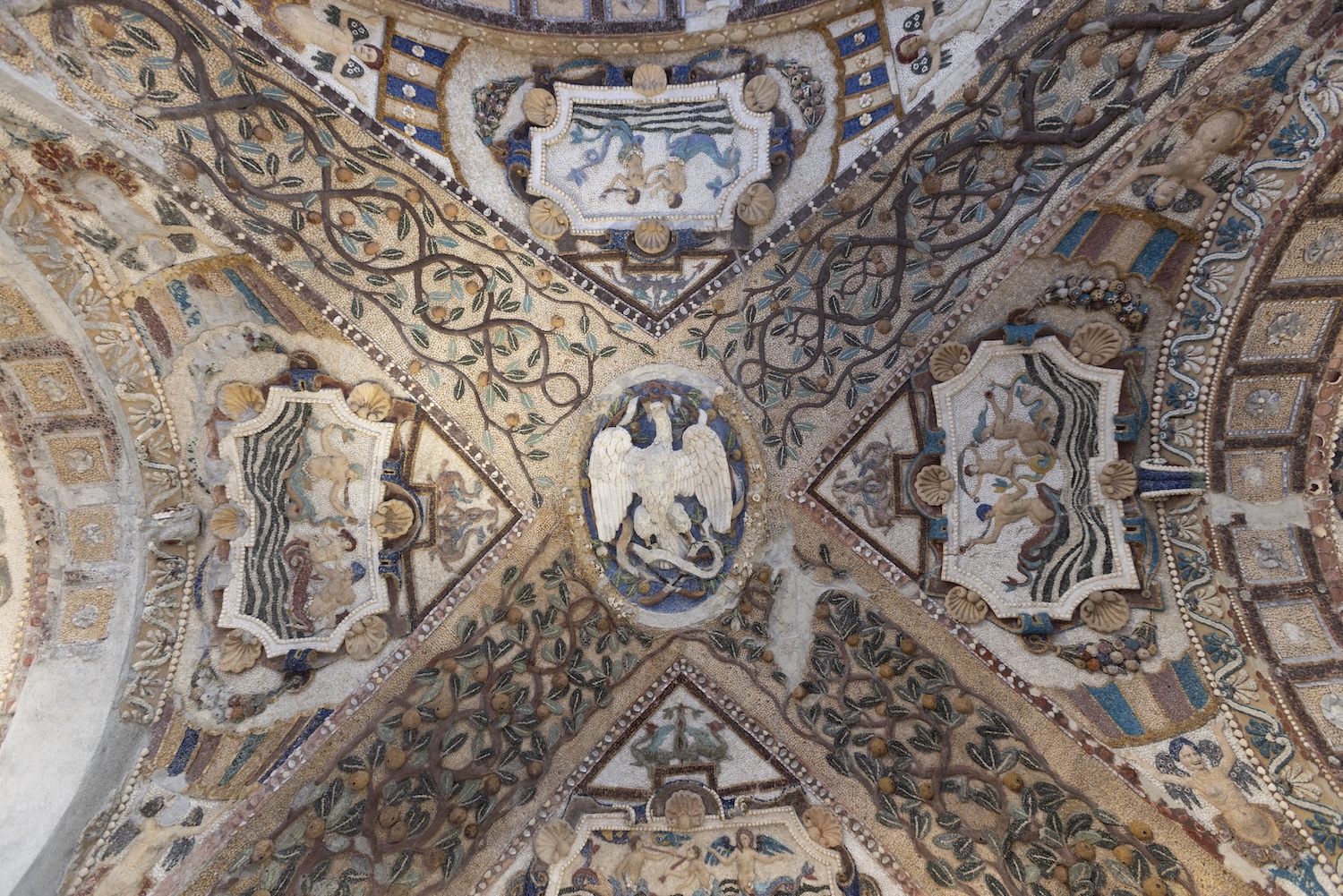
The Grotto of Diana. Photo: Courtesy of Fendi
The restoration set out to enhance the grotto’s elaborate decorative surfaces, which are covered entirely in a dazzling multicolored mosaic made of shells, glass paste, semi-precious stones, stone fragments, and mineral crusts. The multifaceted visuals they depict dial back to Roman history: marine scenes featuring Tritons and Nereids grace the vaults; mythological themes from Ovid’s Metamorphoses adorn walls and ovals. Four caryatid canephorae statues (originally six, but two were lost) bear baskets filled with golden fruit on their heads. The representation of a white eagle, a longtime symbol of the Este family, presides within the vault’s center.
“This restoration aims to explore and decode the countless layers of meaning at Villa d’Este, highlighting how this place continues to radiate its magnificent beauty while occasionally revealing the sophisticated cultural vision that inspired it,” Andrea Bruciati, director of the Villa Adriana and Villa d’Este Institute, said in a statement. “With this effort, we aim to counteract the loss and neglect that often affects our heritage, and the recovery of the Grotto of Diana ensures that his treasure becomes accessible once more to the public.”
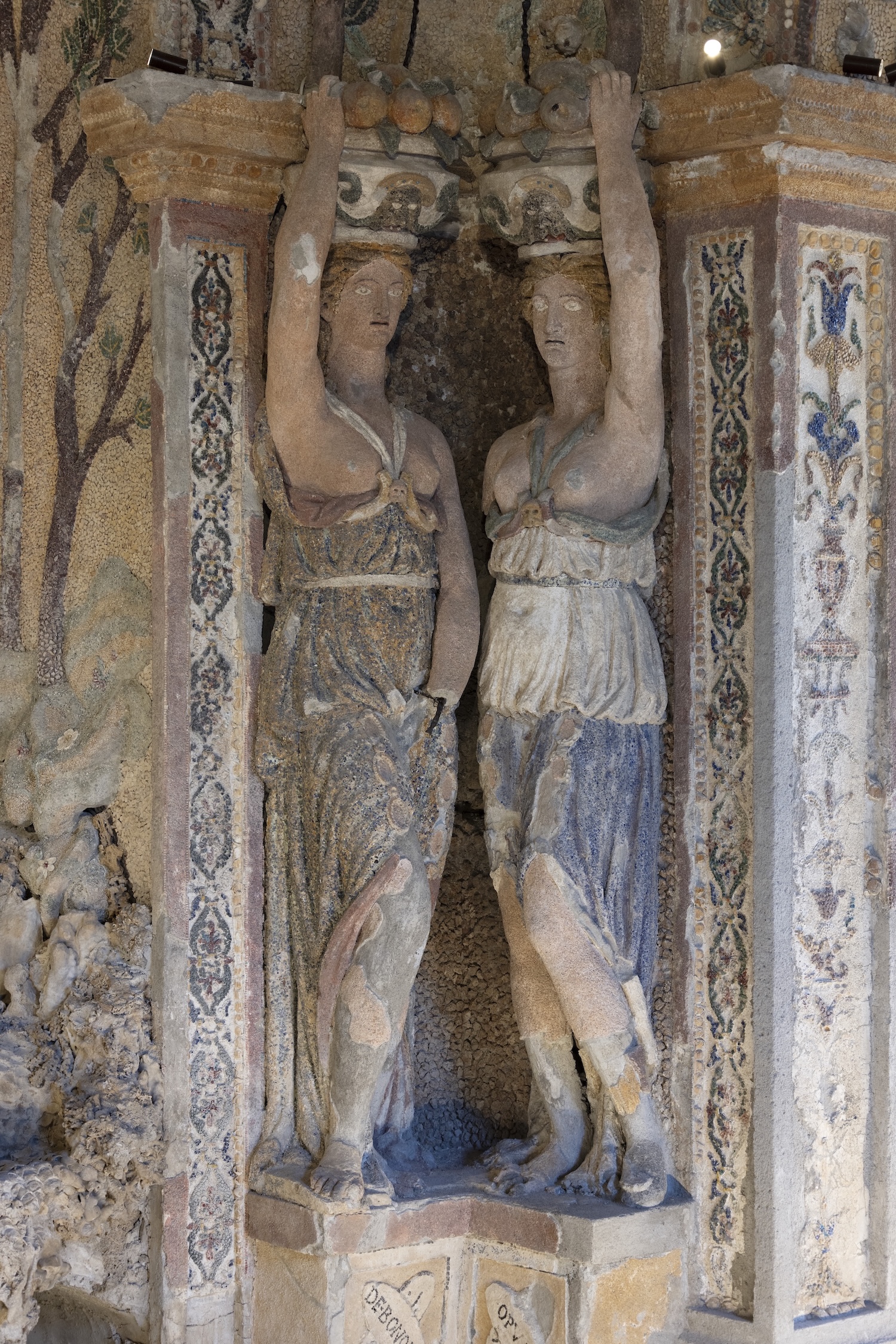
The Grotto of Diana. Photo: Courtesy of Fendi
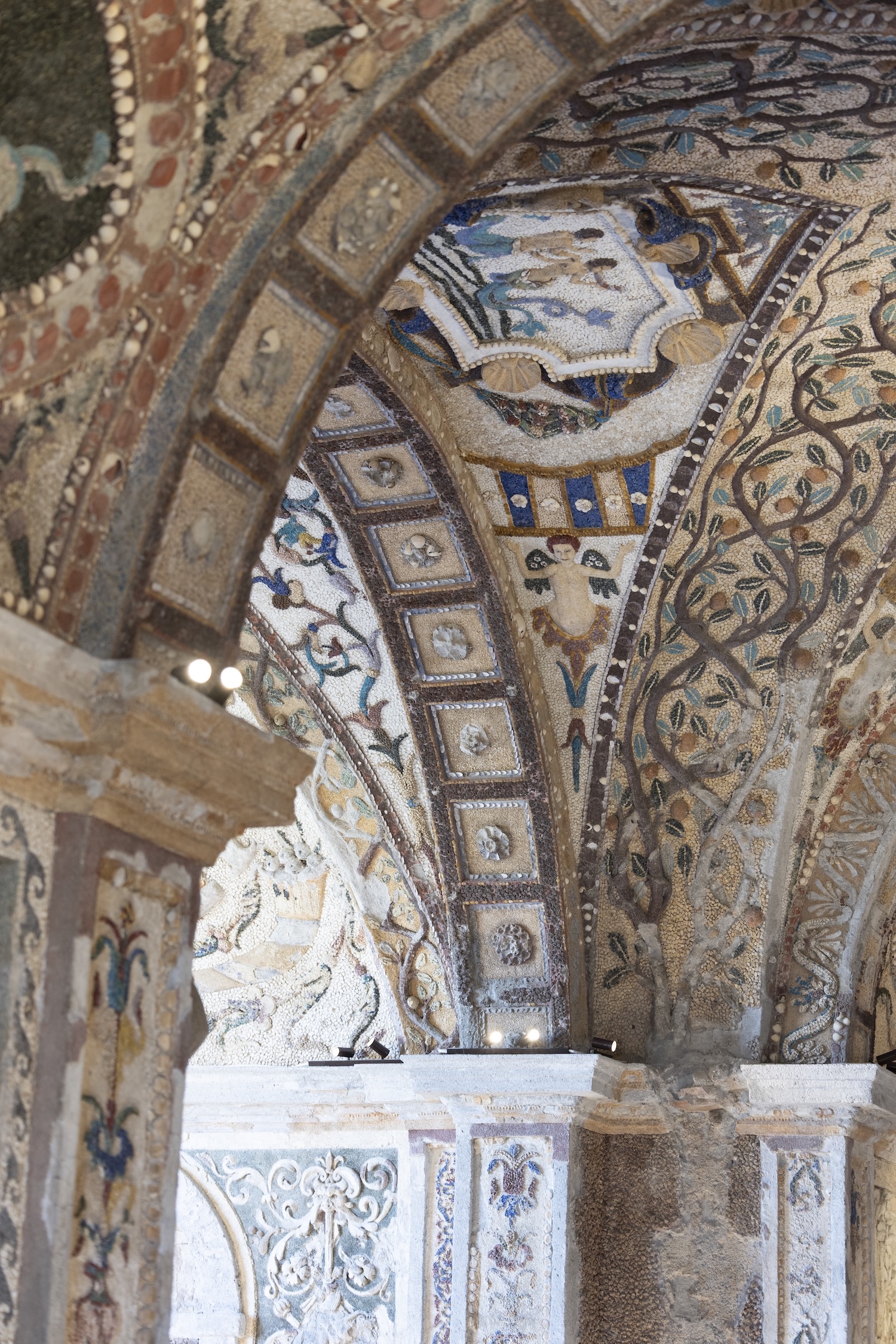
The Grotto of Diana. Photo: Courtesy of Fendi
Years of past interventions significantly altered the nymphaeum’s condition and obscured its original appearance. Diagnostic analyses revealed severe material degradation, parts missing from the caryatids, exposed and corroded supports, decorative elements deteriorated due to poor environmental conditions, and mosaics and glass tiles showing signs of decay. Glazed terracotta flooring, despite worn from decades of foot traffic, remained in decent condition.
Beyond simply preserving the internal decorations, the restoration also set out to enhance every aspect of the nymphaeum, including the architectural structures that support outer facades continuously exposed to the elements. One key intervention involved installing a glass panel in the loggia, a solution designed to protect the grotto from erosion due to high-speed winds.
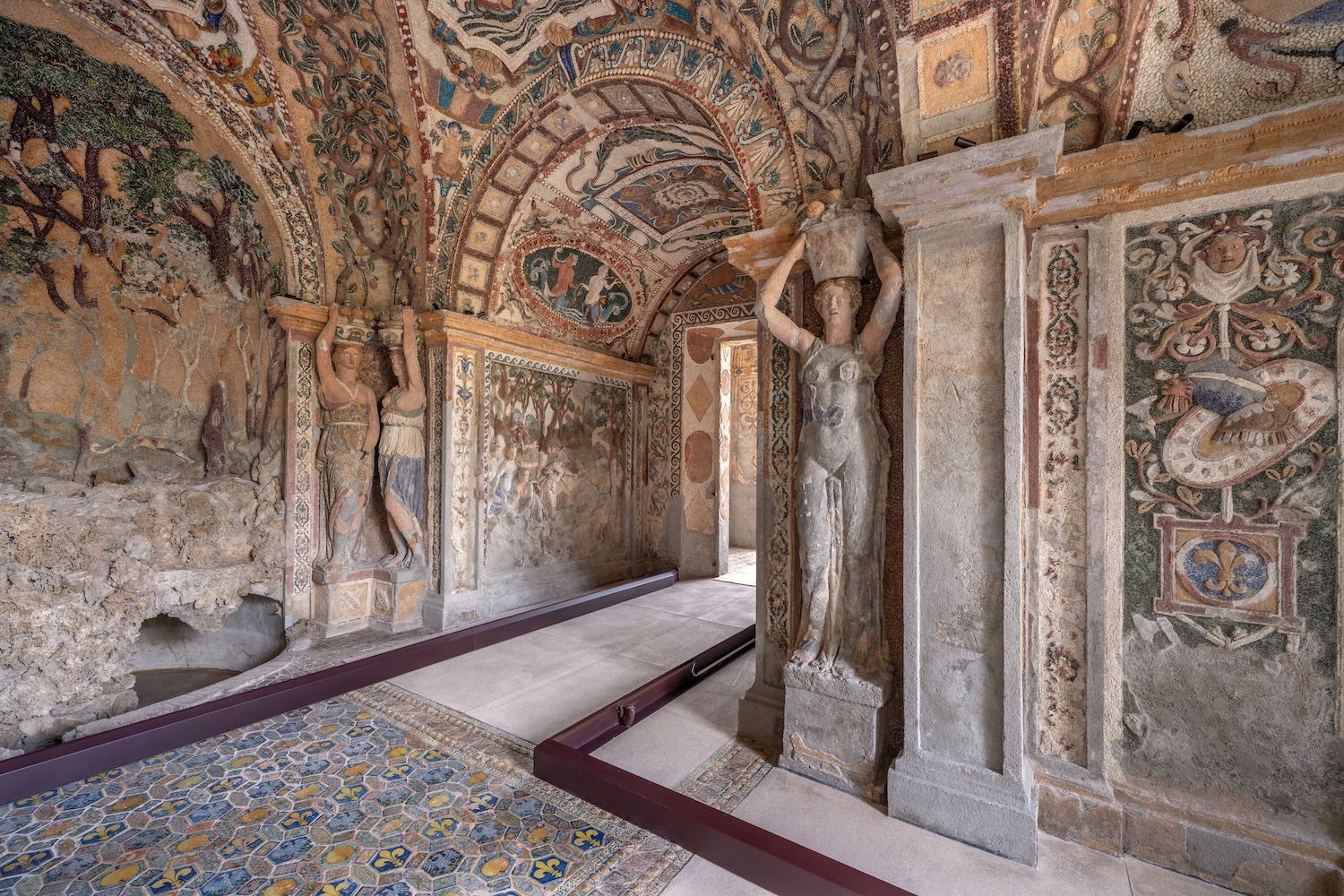
The Grotto of Diana. Photo: Courtesy of Fendi
The two-year conservation project, which commenced in fall 2023, aimed to recover all of the grotto’s unique features. Silvia Venturini Fendi, the Roman fashion house’s artistic director of accessories and menswear, described the restoration and patronage as an “act of love—the latest in a centuries-long journey of protecting and enhancing Italy’s cultural heritage” as the house celebrates its centennial. “Deeply rooted in Rome, where our maison’s foundations and creative heart have been since 1925, this project represents another investment in the future that begins with memory of the past: a commitment to preserving the beauty and history of our country, passing this precious monument on to future generations.”
Fendi has led multiple cultural restoration projects in Rome over the past decade. It supported the restoration of the Trevi Fountain in 2015, helped restore six rooms at the Villa Medici in 2022, and has restored numerous fountains across the Italian capital as part of its ongoing Fendi for Fountains project.

